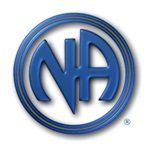NA’s self-titled book, known among members as the “Basic Text”, describes Narcotics Anonymous as “a nonprofit fellowship or society of men and women for whom drugs had become a major problem . . . recovering addicts who meet regularly to help each other stay clean.” Membership is open to any drug addict, regardless of the particular drug or combination of drugs used. There are no social, religious, economic, racial, ethnic, national, gender, or class-status membership restrictions. Narcotics Anonymous membership is completely voluntary; no membership rolls or attendance records are kept, either for NA or anyone else. Members live in the community and attend meetings on their own time. There are no dues or fees for membership; members may contribute very small sums to help cover expenses at group meetings, but contributions are not mandatory.
The core of the Narcotics Anonymous recovery program is a series of personal activities known as the Twelve Steps, adapted from Alcoholics Anonymous. These “steps” include admitting there is a problem, seeking help, self-appraisal, confidential self-disclosure, making amends where harm has been done, and working with other drug addicts who want to recover.
Narcotics Anonymous believes that one of the keys to its success is the therapeutic value of addicts working with other addicts. In meetings, each member shares personal experience with others seeking help, not as professionals but simply as people who have been there themselves and have found a solution. Narcotics Anonymous has no professional therapists, no residential facilities, and no clinics. NA provides no vocational, legal, financial, psychiatric, or medical services. The closest thing to an “NA counselor” is the sponsor, an experienced member who gives informal assistance to a newer member.
The primary service provided by Narcotics Anonymous is the NA group meeting. Each group runs itself on the basis of principles common to the entire organization, principles laid out in the movement’s literature. There is no hierarchical authority structure in Narcotics Anonymous. Most groups have no permanent facilities of their own, instead renting space for their weekly meetings in buildings run by public, religious, or civic organizations. Meetings may be “open,” meaning anyone may attend, or “closed,” meaning only people who are there to address their own drug problem may attend. Meetings are led by NA members; other members take part by talking in turn about their experiences in recovering from drug addiction.
The Narcotics Anonymous program uses a very simple, experience-oriented disease concept of addiction. Narcotics Anonymous does not qualify its use of the term “disease” in any medical or specialized therapeutic sense, nor does NA make any attempt to persuade others of the correctness of its view. The NA movement asserts only that its members have found acceptance of addiction as a disease to be effective in helping them come to terms with their condition.
Narcotics Anonymous encourages its members to observe complete abstinence from all drugs, including alcohol, even substances other than the individual’s drug of choice, though NA’s only stated membership requirement is “a desire to stop using” drugs. It has been the NA members’ experience that complete and continuous abstinence provides the best foundation for recovery and personal growth. However, the use of prescribed medication for the treatment of specific medical or psychiatric conditions is neither encouraged nor prohibited by NA. While recognizing numerous questions in these areas, Narcotics Anonymous feels that they are matters of personal decision and encourages its members to consult their own experience, the experience of other members, and qualified health professionals in making up their minds about these subjects.
One more thing needs to be said about the Narcotics Anonymous program. Its members recognize that NA is but one organization among many addressing the problem of drug addiction. Members feel they have had significant success in addressing their own addiction problems, but Narcotics Anonymous does not claim to have a program that will work for all addicts under all circumstances or that its therapeutic views should be universally adopted. If Narcotics Anonymous can be useful to addicts in your care or in your community, it stands ready to be of service.
About CVANA:
The Champlain Valley Area of Narcotics Anonymous began with a single meeting in Burlington, Vermont in 1985 (which is still in existence). Our fellowship grew and several meetings started in the Burlington area. In 1990, CVANA held its first convention, attracting recovering addicts from all over Vermont and New England. NA has continued to grow as more and more addicts join our fellowship and learn to live life without the use of drugs. Today, we hold many weekly meetings throughout Chittenden, Washington, Lamoille, Franklin, Caledonia, and Orleans County.
Narcotics Anonymous is a non-profit fellowship of men and women for whom drugs have become a major problem. We are recovering addicts who meet regularly to help each other live drug-free. It costs nothing to attend an NA meeting. There are no dues or fees; the only requirement for membership is the desire to stop using. This is a program of complete abstinence from all drugs, which includes alcohol. Our fellowship focuses on recovery from the disease of addiction, an individual’s drug (or drugs) of choice is unimportant. Anyone may join us regardless of age, race, sexual identity, creed, religion or lack of religion. Our primary purpose as an organization is to carry a message of recovery to the still suffering addict. Hopefully, our fellowship may be of benefit to you, your group or your organization.
